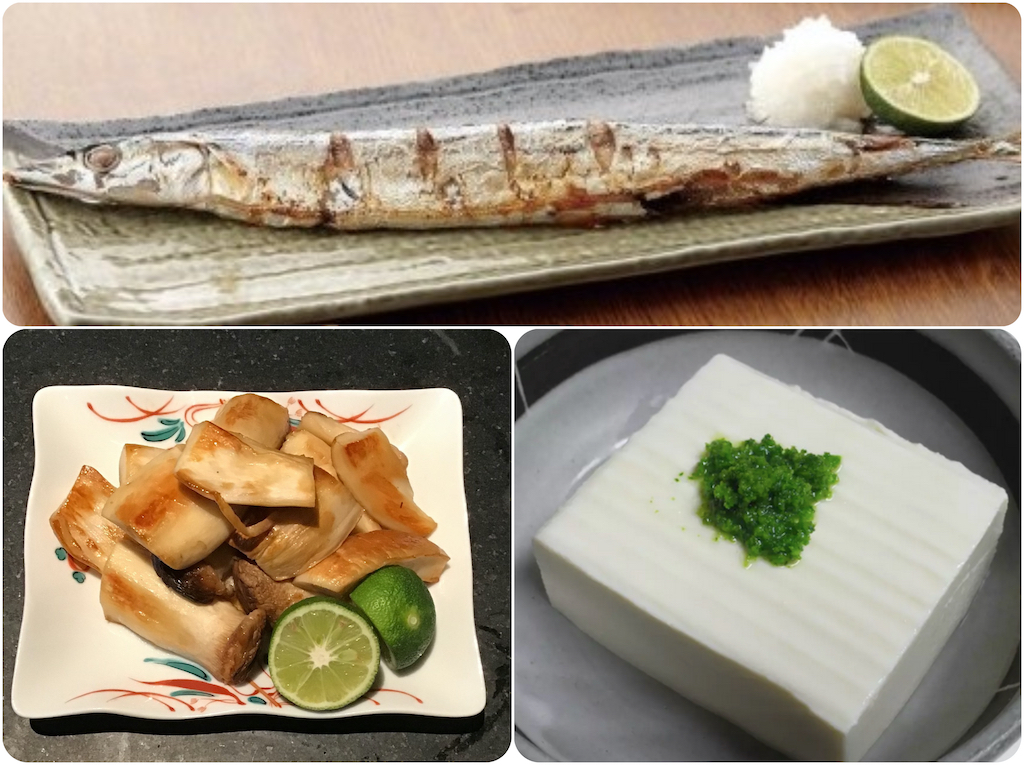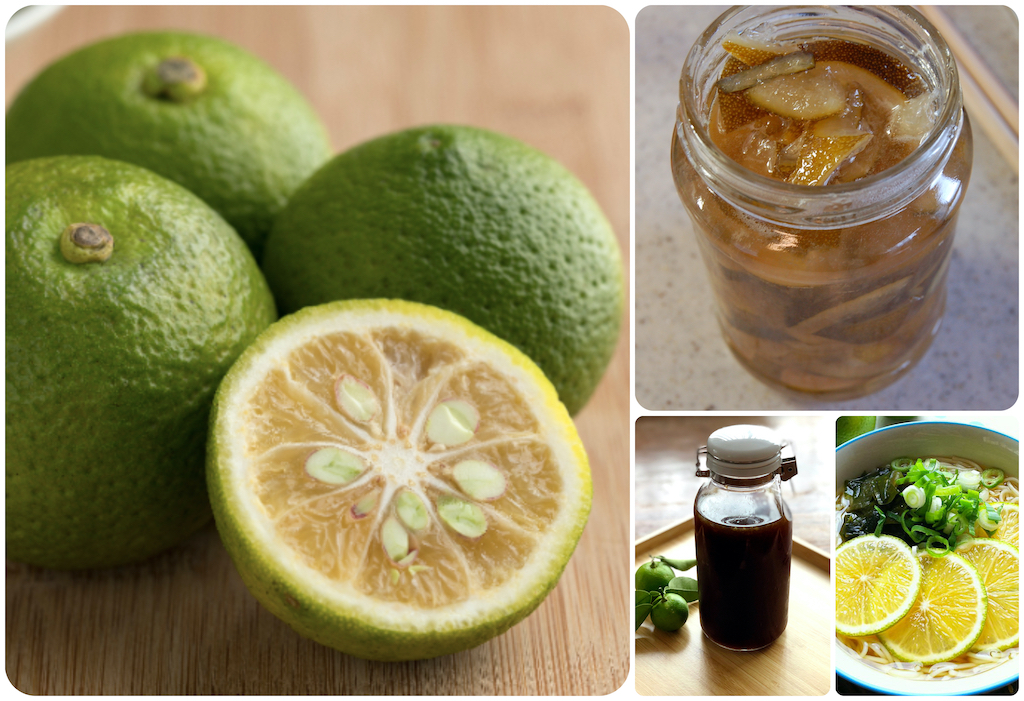
SUDACHI (left) & KABOSU (right)
The Japanese have consumed a variety of citrus for millennia, enjoying both the juice and peels of the fruit. Many who reside outside Japan have become familiar with yuzu, a member of the Rutaceae (citrus) family primarily prized for its aromatic yellow peel but SUDACHI and KABOSU, both enjoyed as green-skinned citrus fruits, remain relatively unknown. I urge you to seek out either (better yet, both) since these fabulous lime-like fruits have such a wide culinary application.

SUDACHI
What does tiny (about 30 grams/1 ounce, 3-4 centimeters/about 1-inch diameter) sudachi taste like? Imagine sour lime tempered with honey-like sweeter tones.
Tokushima Prefecture (Shikoku) is the indisputable top producer of sudachi with about 97% of Japan’s entire market.
One of Japan’s iconic autumnal delicacies is sanma (Pacific saury), served whole, and simply salt-grilled. Grated daikon and SUDACHI are classic accompaniments. The refreshingly tart sudachi juice subdues any unpleasant fishiness while enhancing the oily richness of the flesh.
Sudachi pairs equally well with autumnal mushrooms. Pictured here: meaty éringi (trumpet mushrooms) skillet-seared with a drop of nutty sesame oil and seasoned with a pinch of salt and a splash of saké. A squeeze of sudachi juice is the perfect finishing touch. Download a recipe for: Skillet-Seared Éringi Mushrooms with Sudachi Lime
The peel of sudachi is also edible and grated zest lends an aromatic accent to silken tōfu.

KABOSU
About the size of a golf ball, a single kabosu fruit weighs about 55 grams/2 ounces. What does kabosu taste like? Imagine a blend of grapefruit and orange with a slight lime-like bitterness.
The climate in Oita Prefecture (Kyushu) is ideal for growing the citrus and indeed Oita boasts more than 90% of Japan’s nationwide kabosu production.
Thin rounds of kabosu, skin attached, are often floated on noodles in broth — both warm nyūmen and chilled sōmen, the citrusy flavors slowly seeping into the broth.
If using the fruit for its tangy sweet-and-sour juice, its best to roll the whole fruit on your kitchen counter before slicing and squeezing. Kabosu juice is perfect for ponzu. Save the spent fruit shells after pressing out their juice: the rind (skin) and even the pith can be re-purposed to make marmalade.
Download a recipe for: Kabosu Marmalade.
Download a recipe for: Ponzu.
Kansha — appreciation — is expressed in many ways in the kitchen. One is to make use of all edible parts of a food. More than just a frugal approach to limiting food waste, kansha is a mindset that embodies respect for the hard work of those who bring nature’s bounty to table.
Looking for ways to use SUDACHI and KABOSU fully? See PROJECT SUDACHI & KABOSU for instruction and inspiration.
The theme of the September 2021 newsletter is Sudachi & Kabosu. A copy can be downloaded from my newsletter page.




